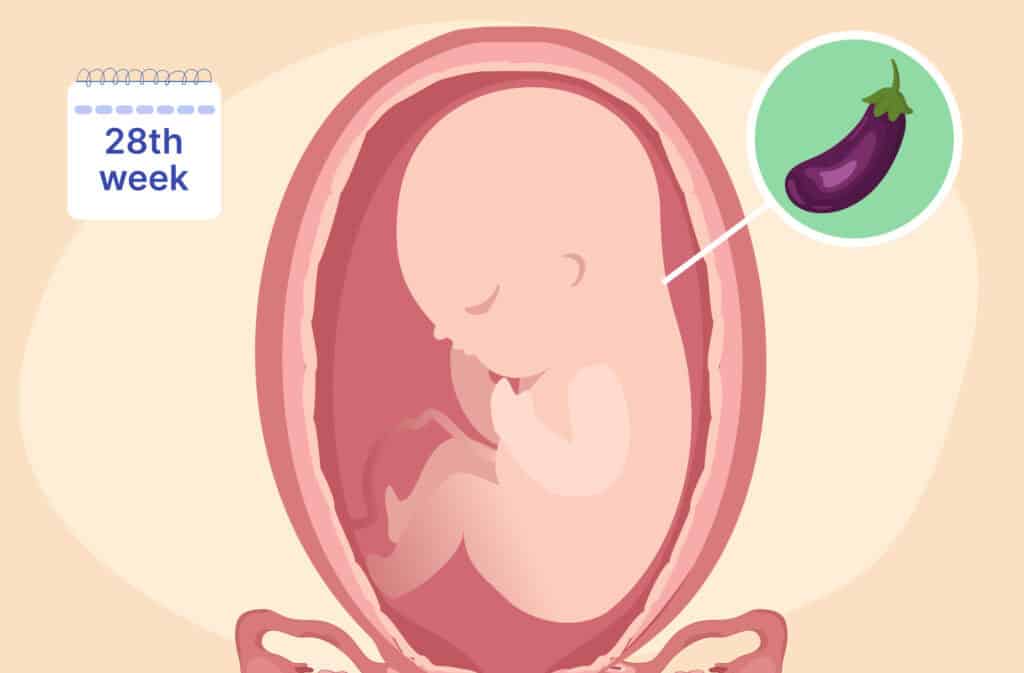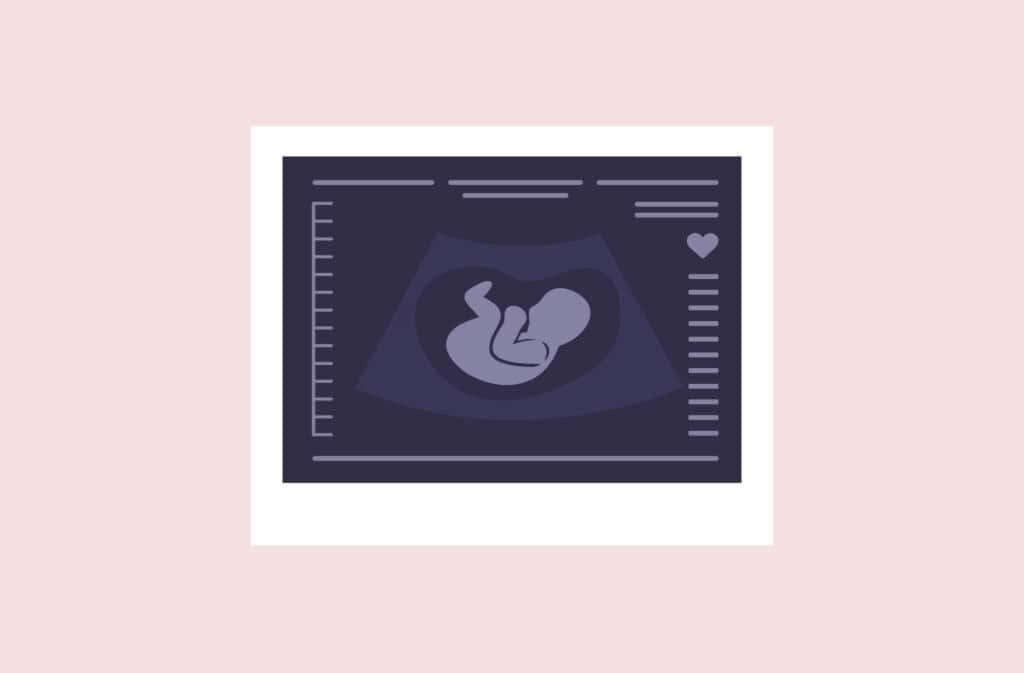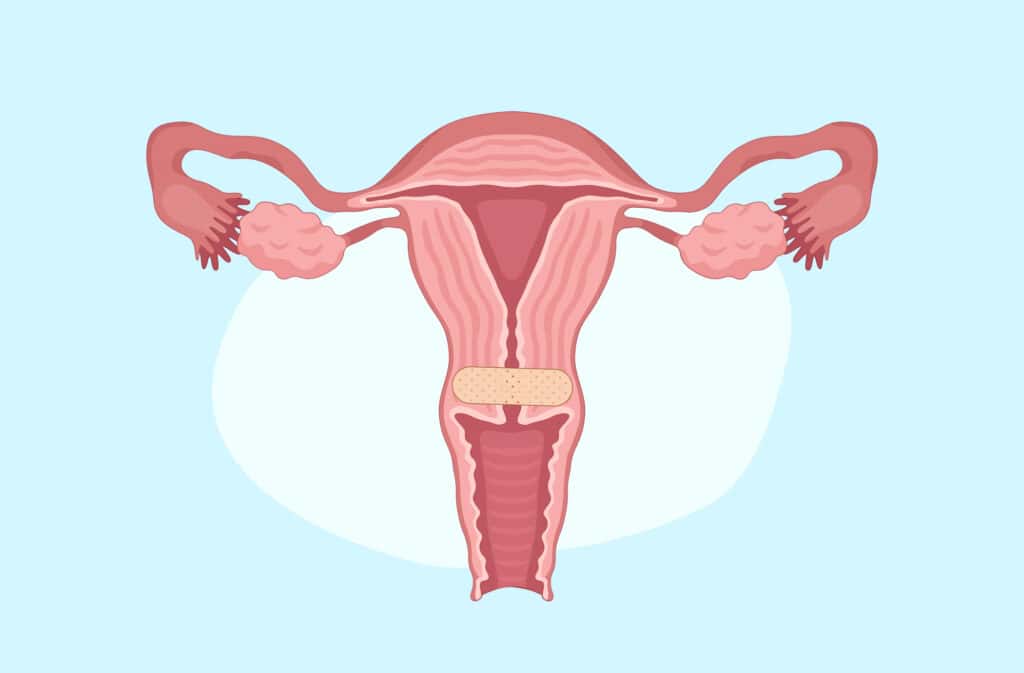Femia > Health Library > Pregnancy > Pregnancy week by week > 28 Weeks pregnant: Entering the third trimester with key insights
28 Weeks pregnant: Entering the third trimester with key insights

- Updated Feb 20, 2025
- Published
CRAFTED BY HUMAN
Crafted by human At Femia, we provide accurate and up-to-date information at every stage of your journey, from trying to conceive, pregnancy and postnatal support. All content is created by a real person based on in-depth research and own professional experience. Femia ensures that you will receive expert advice, strict accuracy and a personalized approach from our authors/medical experts. Learn more about our editorial policy.
FACT CHECKED
Fact checked At Femia Health, we maintain the highest standards of editorial excellence in delivering content focused on helping you conceive, guiding you through pregnancy, and supporting you postpartum. Explore our content review principles to learn how we ensure the accuracy and quality of our health and lifestyle tips for every stage of your journey.
At 28 weeks pregnant, your baby is practicing breathing, growing rapidly, and responding to sounds and light. At this stage, your baby weighs about 2.5 pounds and measures around 15 inches, the size of an eggplant. For you, the third trimester brings new symptoms and the need to focus on self-care.
Welcome to week 28—congratulations, you’ve officially entered the third trimester! Your baby’s organs are maturing, and movements may feel stronger and more coordinated. You might notice changes in your energy levels, mood, and symptoms as your body adapts to this exciting phase. Let’s explore what’s happening with your baby, your body, and how to navigate week 28 pregnancy like a pro.
Monitor your health and your baby’s growth throughout pregnancy with Femia
Pregnancy symptoms at 28 weeks
Here are common symptoms you may experience during week 28:
Leg cramps
Leg cramps are common in the third trimester due to the added weight and changes in circulation. They often occur at night and can be very painful. Stretching your legs, staying hydrated, and gently massaging your calf muscles can help relieve cramps. If cramps are persistent, consult your provider for advice on additional remedies.
Third-trimester aches and pains
As your pregnancy progresses, common aches and pains like round ligament pain, back pain, and pelvic discomfort become more prevalent. These are usually caused by the loosening of ligaments and the growing size of the baby. To ease discomfort, try rest, hot/cold compresses, and safe exercises. If pain worsens or becomes severe, consult your healthcare provider for further guidance.
Hemorrhoids
Hemorrhoids are swollen blood vessels in the pelvic area and are quite common during pregnancy due to increased pressure and constipation. To help manage and prevent them, stay hydrated, eat high-fiber foods, and engage in regular physical activity. If you experience consistent rectal bleeding or severe discomfort, consult your doctor.
Weird dreams
Changes in hormones and sleep patterns often lead to vivid and sometimes strange pregnancy dreams. These can reflect your anxieties or excitement about pregnancy and the upcoming birth. If these dreams are troubling, try to relax before bedtime with a calming routine to ease stress and improve sleep quality.
Pregnancy rashes
Skin changes during pregnancy can sometimes result in rashes. The most common are those caused by eczema or contact dermatitis, though pregnancy-related rashes like PUPPP can occur. If you experience intense itching or a rash that doesn’t improve with over-the-counter creams, consult your doctor for treatment options.
Leaking breasts
Leaking breast milk, or colostrum, is a normal part of preparing for breastfeeding. It’s a rich, yellowish fluid packed with nutrients and antibodies. If you experience leakage, using nursing pads can help keep you comfortable. If leakage is excessive or bothersome, speak to your provider about solutions.
Pelvic bone pain
As your baby grows and your body prepares for labor, pelvic bone pain is common. This can feel like sharp or aching pain in your pelvis, hips, or groin area. The discomfort is usually caused by the softening of ligaments and joints in the pelvic region to allow for childbirth. To relieve pelvic bone pain, try sitting on a cushion, using a pregnancy support belt, or engaging in gentle stretches. If the pain becomes severe or limits your mobility, consult your healthcare provider for additional treatment options.
Constipation
Constipation is a common symptom during pregnancy due to hormonal changes, which slow down your digestive system. As your uterus expands, it can also put pressure on your intestines, making bowel movements more difficult. To alleviate constipation, focus on eating a fiber-rich diet, drinking plenty of water, and getting regular exercise. If these strategies don’t help, consult your doctor about using a stool softener or other safe remedies to relieve constipation during pregnancy.
Braxton Hicks contractions
These are practice contractions that can start becoming noticeable around this time. They are typically irregular and painless but can become stronger as the pregnancy progresses. Staying hydrated and changing positions can help ease the discomfort. If contractions become regular or painful, contact your provider to rule out preterm labor.
Braxton Hicks contractions vs true labor
| Aspect | Braxton Hicks contractions | True labor |
|---|---|---|
| Frequency | Irregular, not progressively closer together | Regular intervals, getting closer together |
| Intensity | Weak, often described as mild discomfort | Increases in strength over time |
| Duration | Short, usually lasting less than 30 seconds | Longer, lasting 30-70 seconds per contraction |
| Location of pain | Felt mainly in the front of the abdomen | Starts in the back and radiates to the front |
| Effect of movement | Stops or decreases with activity or a change in position | Continues regardless of movement or position changes |
| Cervical changes | Does not cause dilation or thinning of the cervix | Causes the cervix to dilate and thin out (effacement) |
Your body at 28 weeks pregnant
At 28 weeks pregnant, you’re entering your third trimester, and your body is continuing to undergo significant changes. Your uterus is now about 2.5 inches above your belly button, and your baby bump is growing more prominent. This expansion can put added pressure on your bladder and pelvic area, leading to increased bathroom visits and pelvic discomfort. You may also notice your skin stretching more, which can lead to some itching or the development of new stretch marks.
As your baby grows, you may experience new physical sensations, including shortness of breath due to your growing uterus pressing on your diaphragm. Additionally, your heart is working harder, and you might notice a slight increase in your blood volume, which could lead to swollen feet and ankles. While these changes are normal, it’s important to listen to your body and rest when needed. If you notice sudden swelling in your hands, face, or feet, or have any severe discomfort, be sure to check with your healthcare provider.
28-Week pregnant belly
Your bump is more pronounced, and your baby’s movements may shift your belly’s shape throughout the day. Some women experience itchiness or tightness in their skin—moisturizing can help soothe these symptoms.
28 Weeks pregnant in months
You are now 7 months pregnant, marking the start of your third trimester, which lasts from week 28 to the end of your pregnancy.
Baby development at 28 weeks
At 28 weeks, your baby is in the final stages of development before birth, and their body is continuing to grow and mature. The brain and nervous system are rapidly developing, allowing your baby to regulate their body temperature more effectively and begin coordinating motor skills.
- Vernix. Your baby is now covered in a thick layer of vernix, a creamy, protective coating that helps safeguard their skin from the amniotic fluid. This substance also plays a role in regulating your baby’s body temperature. As your baby continues to develop, this layer will start to thin, though some of it may remain on their skin after birth.
- Baby’s senses. Your baby’s senses are improving rapidly. They are becoming more sensitive to sound and may respond to external noises, including your voice. Your baby can now hear your heartbeat, the rhythm of your voice, and even loud sounds from the outside world. Additionally, their sense of touch is developing as they start to explore their environment within the womb.
- Baby’s brain. Your baby’s brain is developing rapidly at 28 weeks, with the formation of new neural connections and growth of the cerebral cortex. This helps your baby develop vital functions such as memory, attention, and coordination. Their brain will continue to mature in preparation for life outside the womb. At this stage, the baby’s eyes are open, and they may even be able to follow light with their eyes, further aiding in their development.
28 Weeks baby size
The 28-week fetus size is about 15 inches long and weighs around 2.5 pounds, similar to the size of an eggplant. They’re continuing to build fat, which helps regulate body temperature after birth.
28-Week ultrasound
A 28-week ultrasound may be performed if your provider wants to check on your baby’s growth, position, or amniotic fluid levels. This scan may show detailed features like their facial expressions or thumb-sucking.
28-Week preemie
A baby born at 28 weeks has a 92-95% survival rate, benefiting from more advanced lung development, including surfactant production. They may still need respiratory support and feeding assistance in the NICU. Reflexes like sucking are starting to form, and with early therapies, many 28-week preemies catch up to their peers over time.
👉Find out more:
29 Weeks pregnant: Baby’s growth, symptoms, and preparation for labor
Tests to expect at 28 weeks pregnant
At this stage, prenatal visits and routine tests help monitor your health and your baby’s development:
- Blood pressure monitoring: Checks for signs of preeclampsia or hypertension.
- Glucose tolerance test (if not already done): Screens for gestational diabetes by measuring how your body processes sugar.
- Rh antibody test: If you’re Rh-negative, your doctor may administer an Rh immunoglobulin shot to prevent complications in future pregnancies.
- Blood tests: Check for anemia to ensure your body is producing enough red blood cells to support you and your baby.
- Fetal heartbeat and movements: Your provider will listen to your baby’s heartbeat and ask about movement patterns to ensure they’re active and healthy.
- Urine test: Screens for protein levels, which can indicate preeclampsia.
These tests provide critical insights into your health and your baby’s well-being as you prepare for the final stretch of pregnancy. Be sure to discuss any symptoms or concerns with your healthcare provider.
Monitor your health and your baby’s growth throughout pregnancy with Femia
What are 5 warning signs of a possible problem during pregnancy?
During pregnancy, it’s essential to be aware of certain warning signs that could indicate complications. If you experience any of these symptoms, it’s important to contact your healthcare provider immediately to ensure both your health and your baby’s well-being.
1. Severe or constant abdominal pain
While mild cramping or discomfort is common as the uterus expands, severe or persistent abdominal pain can be a cause for concern. It could be a sign of a variety of complications, such as an ectopic pregnancy, a problem with the placenta, or even preterm labor. Severe pain that doesn’t subside or is accompanied by other symptoms should not be ignored.
2. Heavy bleeding or bright red bleeding
Spotting or light bleeding can occur early in pregnancy, but heavy bleeding or bright red blood is not typical and could indicate a serious problem. Potential causes include a miscarriage, placenta previa, or placental abruption. If you experience heavy bleeding, or if the bleeding is bright red (which indicates fresh blood), seek medical advice immediately.
3. Reduced or absent fetal movement
Fetal movements are a reassuring sign that your baby is doing well. However, if you notice a significant reduction in movement or if your baby becomes unusually still, it could be a sign that something is wrong. While fetal movements naturally fluctuate, a noticeable decrease in movement requires prompt attention from your healthcare provider.
4. Severe headaches with vision changes
Headaches during pregnancy are common, but severe headaches, especially if accompanied by blurred vision or other visual disturbances, can be signs of high blood pressure or a condition called preeclampsia. Preeclampsia is a serious pregnancy complication that can lead to severe health issues for both mother and baby. If you experience these symptoms, it’s crucial to consult your doctor right away.
5. Sudden or extreme swelling, particularly in the hands, face, or legs
Mild swelling in the feet and ankles is common during pregnancy, but sudden, severe swelling in the hands, face, or legs can signal a complication like preeclampsia or deep vein thrombosis (DVT). Preeclampsia, in particular, can be life-threatening for both the mother and baby if not treated. If you notice any sudden or extreme swelling, especially if it’s accompanied by high blood pressure or other symptoms, seek medical attention immediately.
Remember, always err on the side of caution during pregnancy. If you notice any of these warning signs or have concerns, don’t hesitate to contact your healthcare provider to ensure both your safety and that of your baby.
Health tips and self-care at 28 weeks pregnant
Consider making a birth plan
Now is a great time to start thinking about your birth plan, as you’re approaching the final stages of pregnancy. A birth plan allows you to outline your preferences for labor and delivery, such as pain management, positions for labor, who will be with you, and any special requests. While it’s important to remain flexible, having a plan can help you feel more prepared and in control. Discuss your plan with your healthcare provider to ensure that your preferences are realistic and safe.
Get plenty of rest
Your body is doing a lot of work, so prioritize rest during your third trimester. Make time to nap when you can and aim for quality sleep at night. If you’re finding it difficult to get comfortable, try using pillows to support your back and legs, or sleep on your left side to improve blood flow. Resting will help you manage the fatigue that comes with this stage of pregnancy and prepare your body for labor.
Stay hydrated
Drinking plenty of water is crucial at this stage. Staying hydrated supports healthy amniotic fluid levels, helps reduce swelling, and prevents dehydration. It can also help reduce the frequency and intensity of Braxton Hicks contractions. Keep a water bottle with you throughout the day to remind yourself to drink, and aim for at least eight glasses of water a day, or more if you’re exercising or spending time outdoors.
Exercise regularly
Gentle exercise such as walking, swimming, or prenatal yoga can help you stay active, relieve back pain, and reduce swelling. It can also help you maintain a healthy weight and prepare your body for labor. Always listen to your body, and if you feel any discomfort, stop and rest. Talk to your provider before starting any new exercise routine to ensure it’s safe for you and your baby.
Start preparing for maternity leave
As you approach the final trimester, it’s a good time to start planning for maternity leave if you haven’t already. Review your workplace policies and talk to your employer about your leave options. Make sure all necessary paperwork is filed in advance, so you can focus on your health and your baby once the time comes to leave work. Preparing ahead of time will help you feel less stressed and more organized.
Monitor your mental health
Pregnancy can be an emotional rollercoaster, and it’s common to experience a mix of excitement, anxiety, and even moments of feeling overwhelmed. It’s essential to check in with yourself regularly. If you feel persistently down, anxious, or overwhelmed, reach out to your healthcare provider for support. Prenatal counseling or joining a support group can help you navigate the emotional ups and downs of pregnancy.
Questions from the Femia community
How to manage mood swings? Are they normal?
Yes, mood swings are normal due to hormonal changes and physical discomfort. Prioritize self-care with activities you enjoy, stay connected with loved ones for emotional support, and consider relaxation techniques like yoga or deep breathing to improve mood.
Is pregnancy yoga beneficial? What practices would you recommend?
Yes, pregnancy yoga improves flexibility, reduces stress, and relieves aches. Choose gentle poses like cat-cow stretches or seated forward bends. Always consult your doctor before starting, and avoid poses that require lying flat on your back.
How do I track baby movements?
Set aside a quiet time to lie down and focus on your baby’s movements, paying attention to their typical patterns. Since every baby is unique, recognizing what is normal for your baby is key. Recent updates (2021) from the American College of Obstetricians and Gynecologists (ACOG) no longer recommend routine kick-counting as the primary method for fetal monitoring, citing limited evidence of its effectiveness and potential to cause unnecessary anxiety. However, if you observe a significant decrease in your baby’s usual activity, contact your physician or clinic without delay.
What should you not do at 28 weeks pregnant?
- Avoid heavy lifting or straining, as this can cause back pain or other injuries
- Don’t engage in high-risk activities or exercises that could lead to falls or injury
- Avoid excessive caffeine or sugary foods, as they can contribute to dehydration and blood sugar spikes
- Don’t ignore signs of preterm labor, such as regular contractions or unusual discharge—always consult your healthcare provider
The bottom line
At 28 weeks pregnant, you’re entering the third trimester with exciting baby developments and new symptoms. Focus on staying active, managing mood swings, and attending regular prenatal checkups to ensure you and your baby remain healthy.
References
- “28 Weeks Pregnant: Symptoms, Baby Development & Tips.” BabyCenter, www.babycenter.com/pregnancy/week-by-week/28-weeks-pregnant.
- “Week 28 of Pregnancy: Symptoms, Baby Development & More.” What to Expect, www.whattoexpect.com/pregnancy/week-by-week/week-28.aspx.
- “28 Weeks Pregnant: Baby Development, Symptoms & Tips.” NHS, www.nhs.uk/pregnancy/week-by-week/1-to-12/28-weeks/.
- “Pregnancy Week 28: What to Expect.” American Pregnancy Association, www.americanpregnancy.org/healthy-pregnancy/week-by-week/28-weeks-pregnant/.
- Patki, Mugdha, and Manasi Pisal. “Role of Oxidative Stress in Oocyte Aging and Reproductive Outcomes.” Journal of Human Reproductive Sciences, vol. 10, no. 3, 2017, pp. 214–220. PubMed Central, https://pmc.ncbi.nlm.nih.gov/articles/PMC4921282/. Accessed 17 Oct. 2024.
- Smith, Jane, et al. “Updated Guidelines on Fetal Movement Monitoring and Its Implications for Practice.” MCN: The American Journal of Maternal/Child Nursing, vol. 49, no. 6, 2024, pp. 321–326. Lippincott Williams & Wilkins, https://journals.lww.com/mcnjournal/pages/articleviewer.aspx?year=2024&issue=11000&article=00002&type=Fulltext. Accessed 14 Nov. 2024.

Compare Down syndrome ultrasound vs normal scans. Learn 8 key signs, including nasal bone differences. Discover what abnormalities can be seen at 12-week and 20-week scans. Expert insights from Femia.

Having an orgasm while pregnant is overall safe – nonetheless, several myths and misinformation persist in the community. Let’s discuss if denying yourself intimacy is truly the right thing to do.

How can your cervix get bruised and what are the telltale signs? Learn how to recognize bruised cervix symptoms after sex and know when to seek help.

